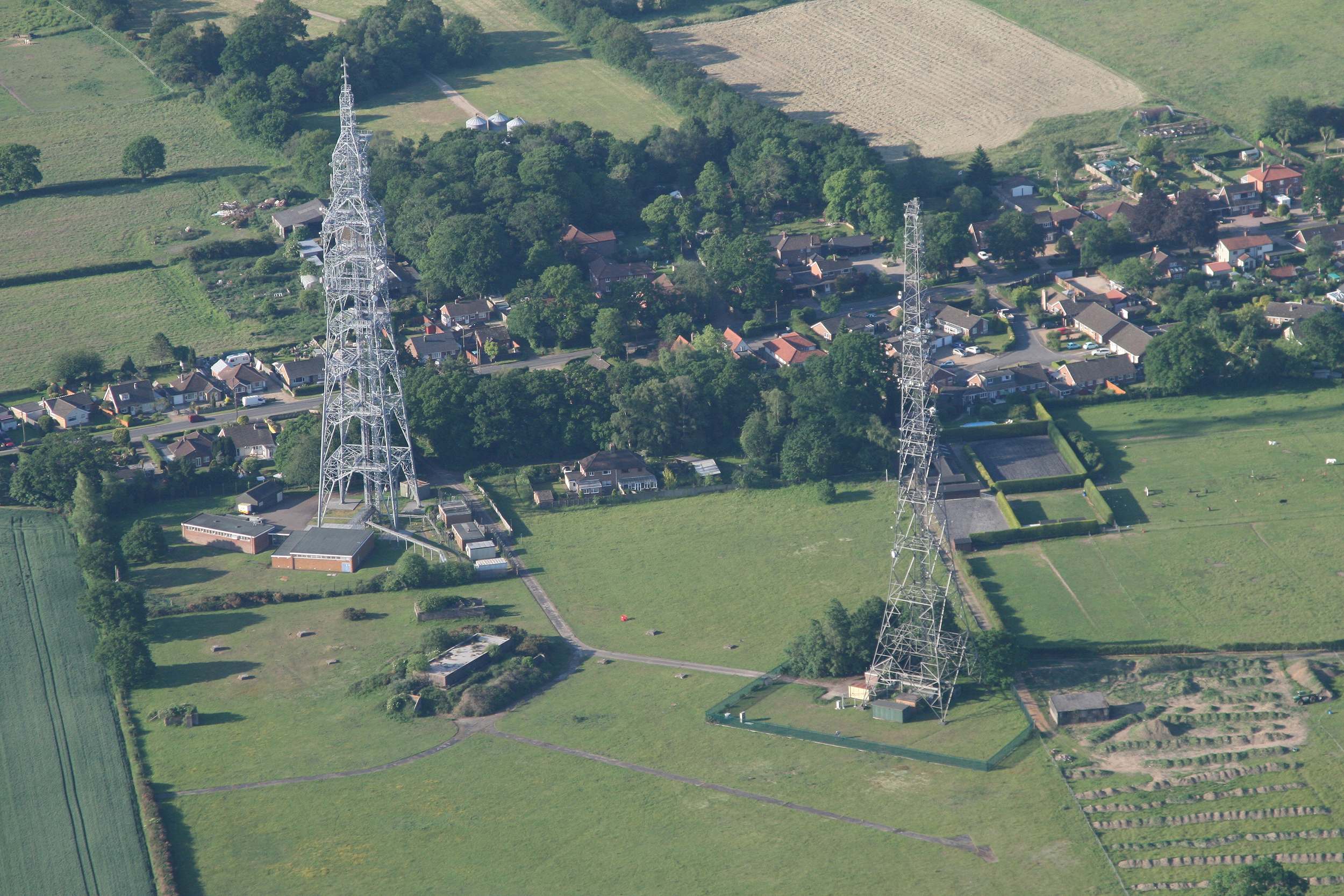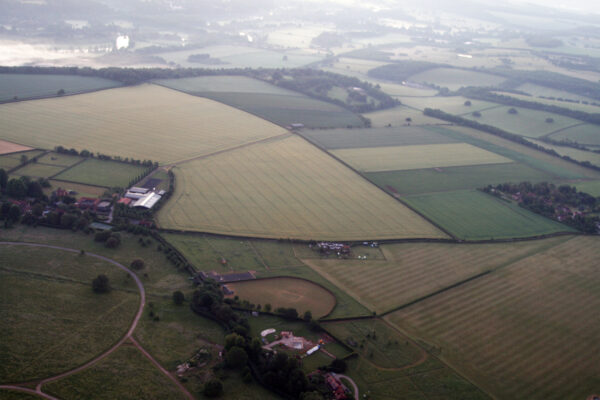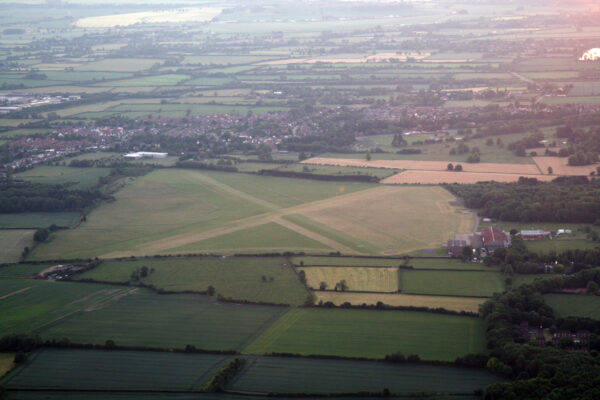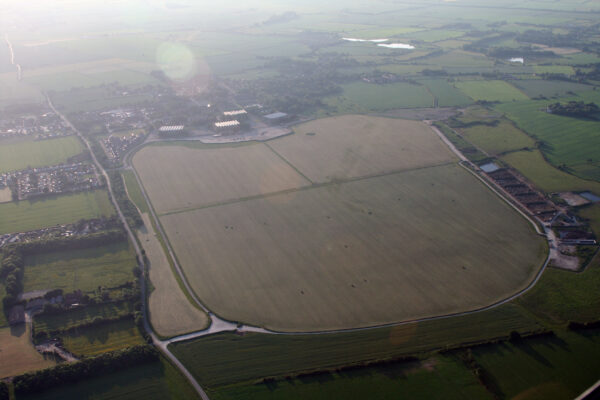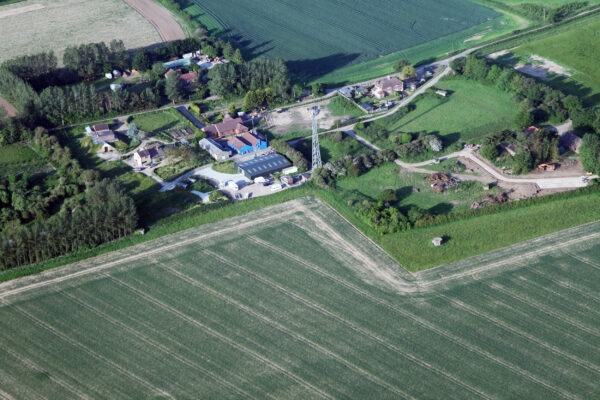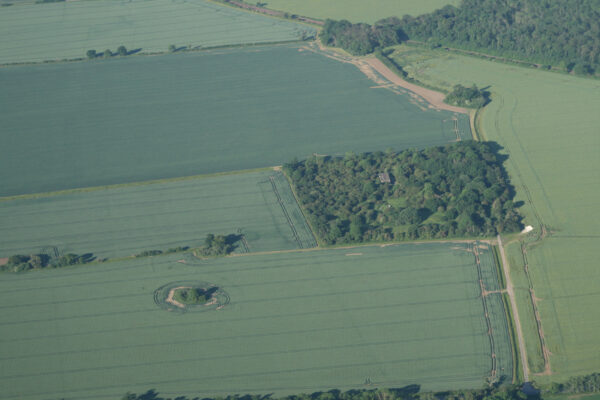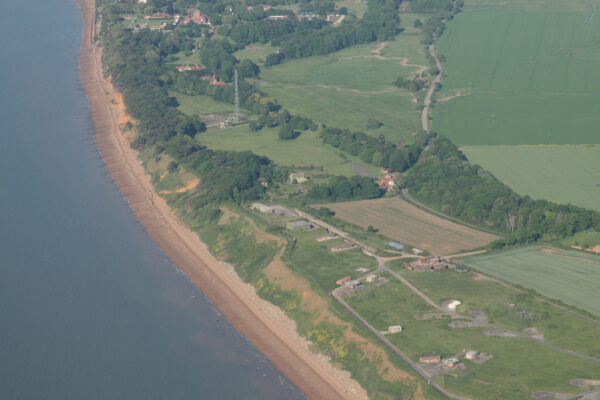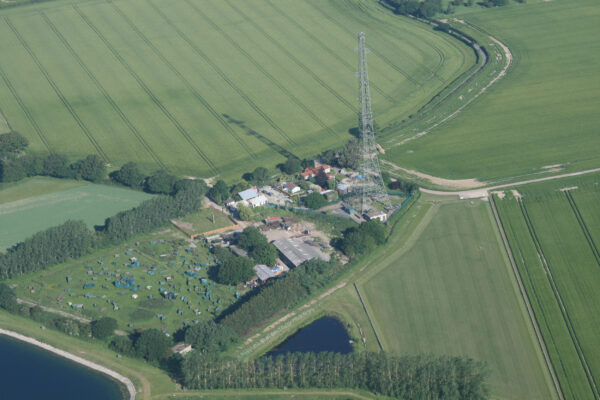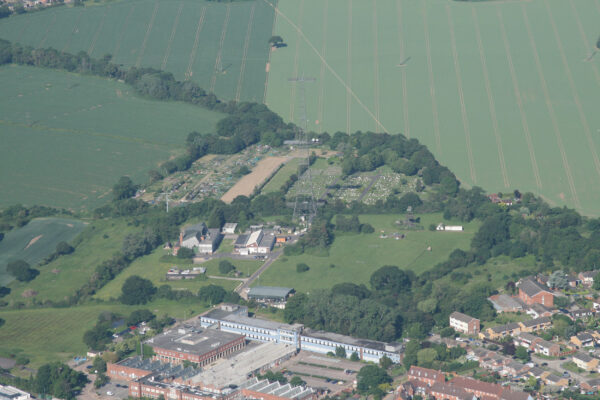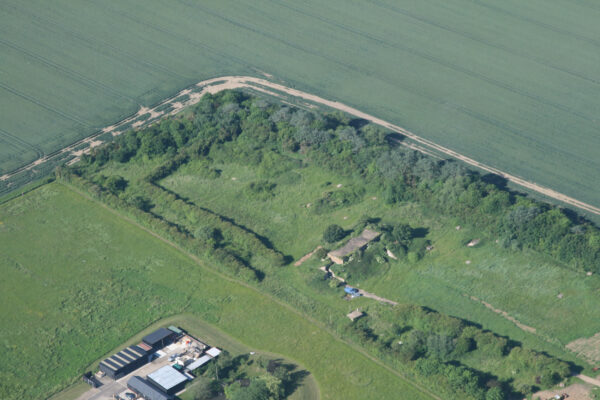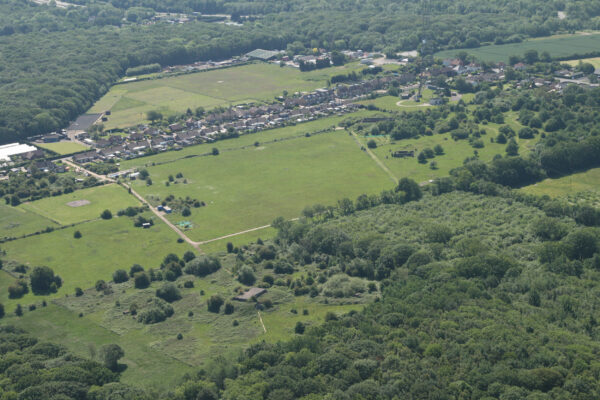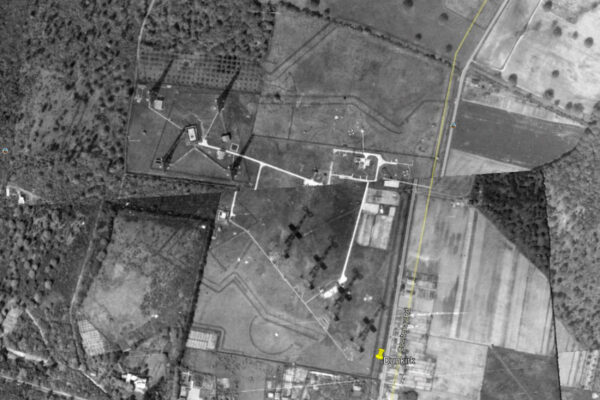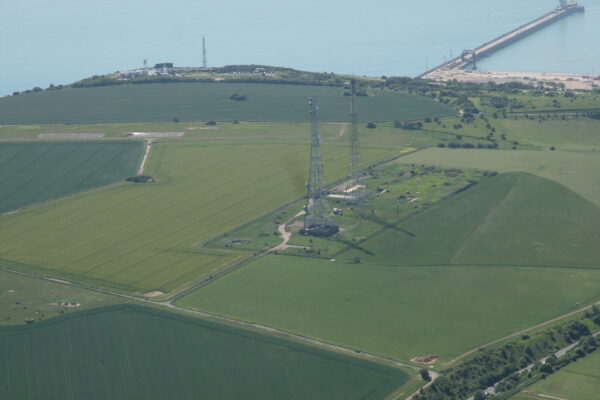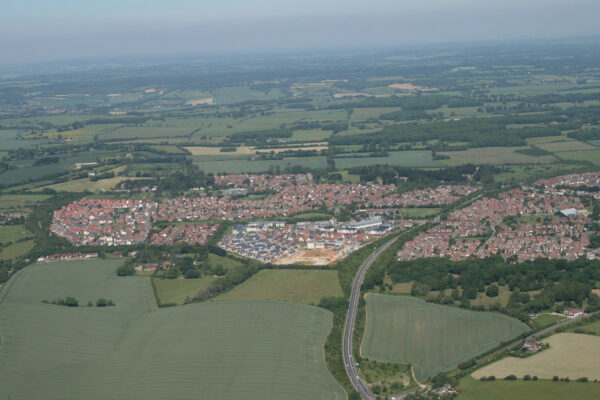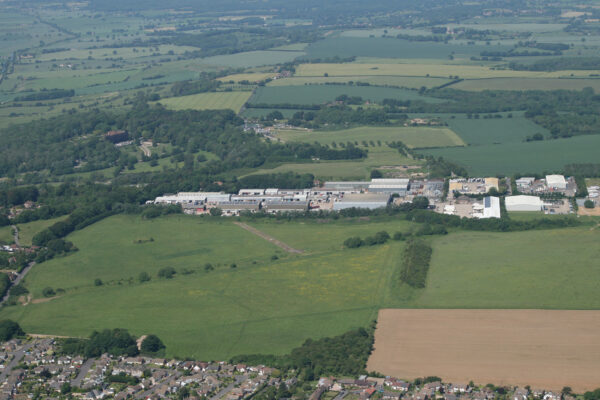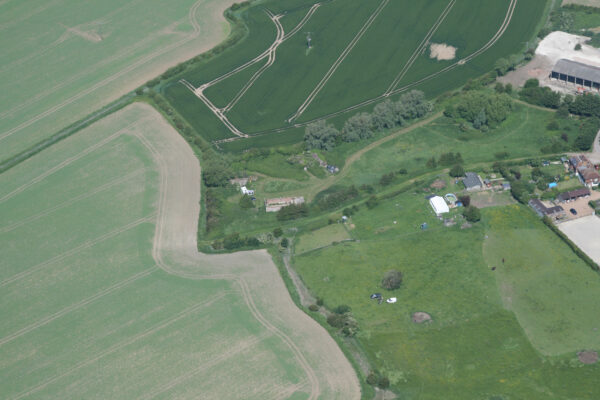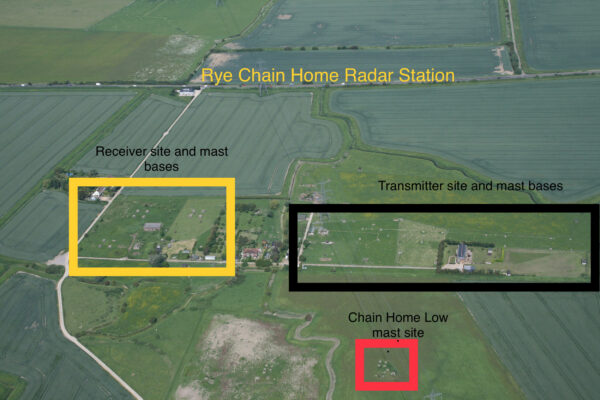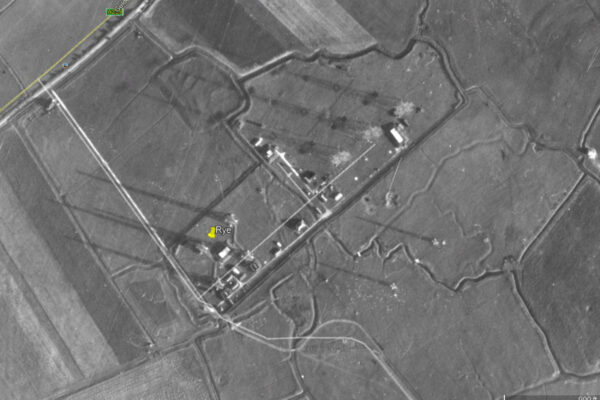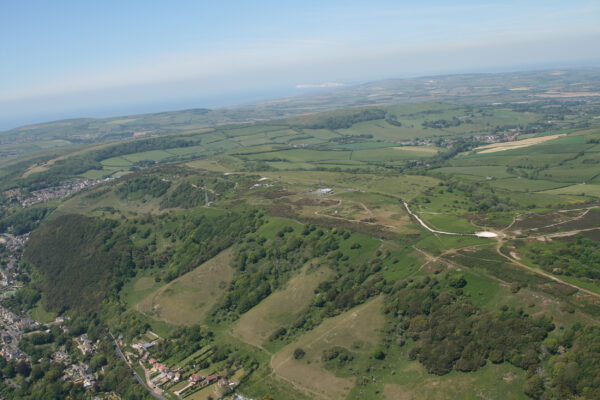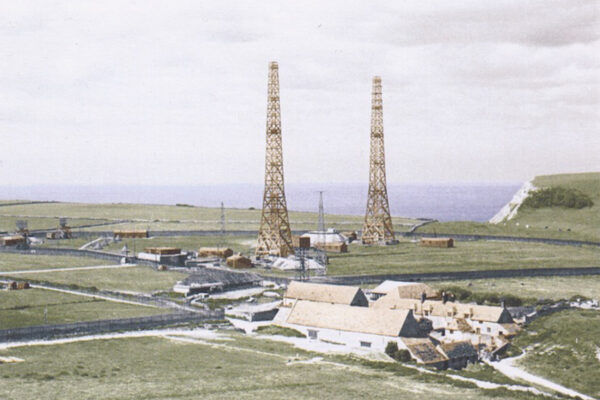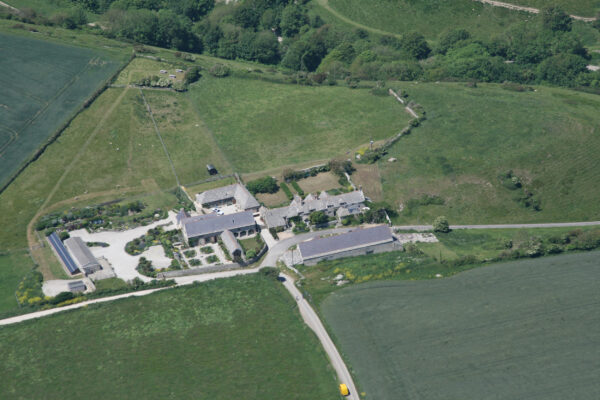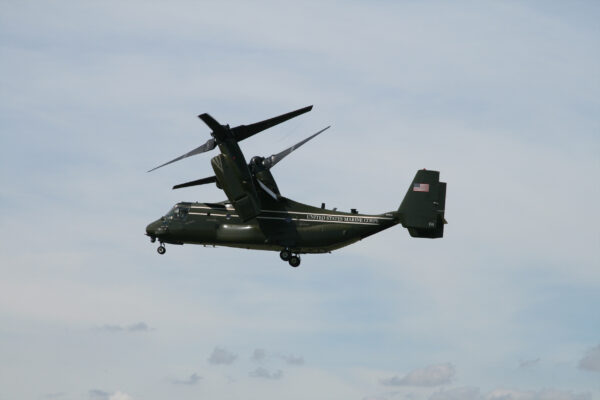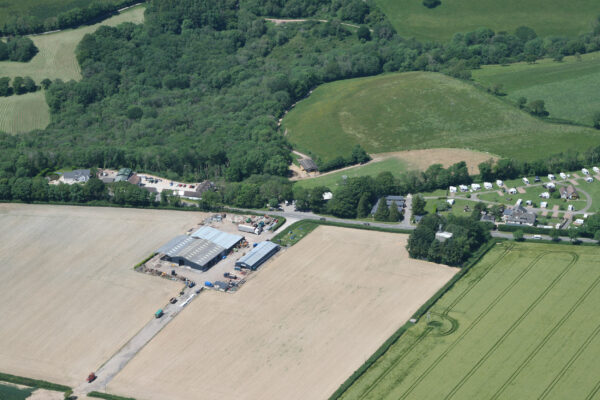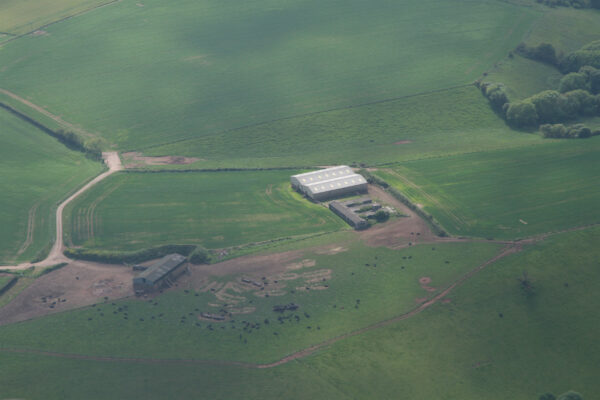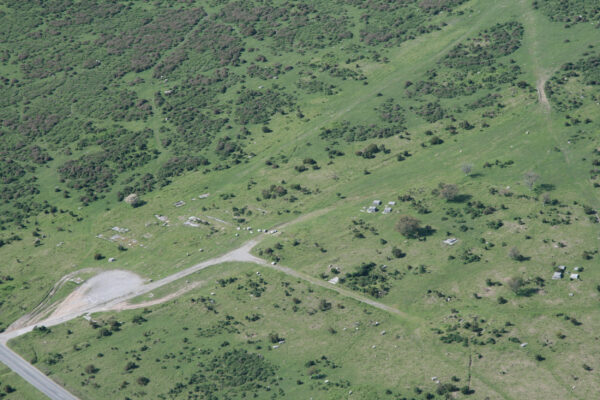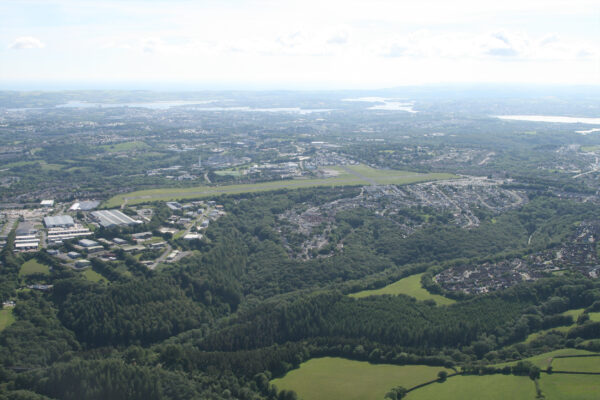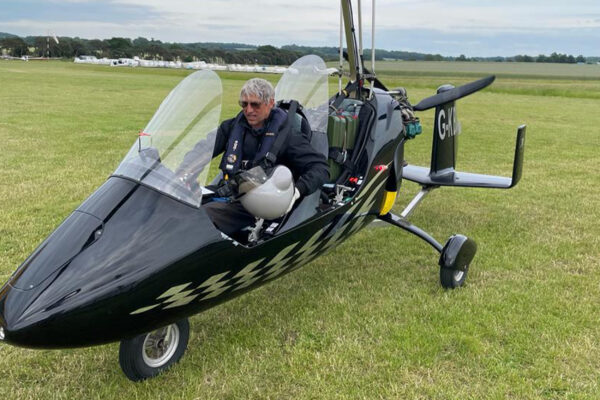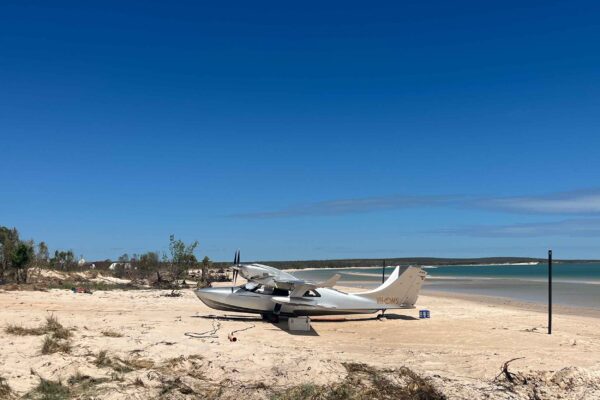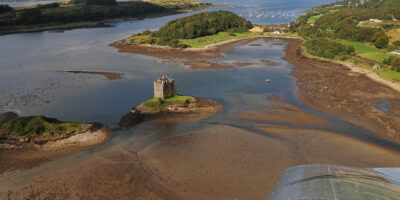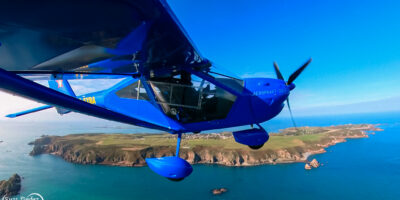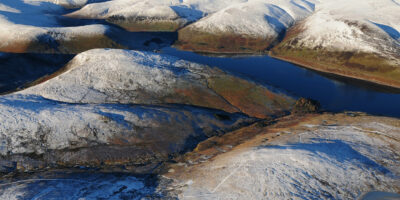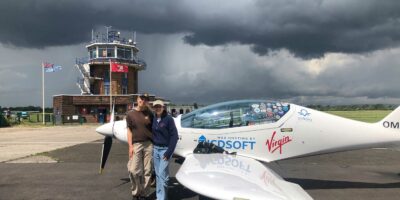development. Now a residential activities centre I thought it wise not to fly too low taking photographs… Apparently in 1943-44 the boffins here were working on a project referred to as 1090 (the ADS-B frequency) for the RAF. I wonder what happened to it?
“We transit past Lydd listening to two aircraft leaving the hold and joining the ILS”
Over Felixstowe and Harwich looking for the next mast, there’s a new one on an old site, Great Bromley. There are lots of structures on the ground and I struggle to see anything to positively identify the location as a former Chain Home site, until I spot the flat top of the Rx block.
Passing to the south of Colchester, I called Southend Approach to reset the squawk and make my request for the photo tasking. Yes, it all looks possible… I’m to call for clearance after getting my photos of the Great Baddow complex and make my turn in. Great Baddow has one of the last original transmitter masts and the site next to it has been used for radio and radar development ever since.
I’m given clearance to the village of Canewdon via the overhead of Stow Maries, a former WWI airfield, and now a museum. I slow and reduce height for the pictures of Canewden, and for a change the Tx site is the more obvious. I’m directed out of the zone via Southend Pier and Stoke on Medway Airfield. I know this part of the world as I learned to fly gyroplanes here.
Southend passes my next radio frequency and I read back correctly, then squawk Conspicuity. I called Rochester, no reply, it’s early, I’m ahead of time, so I’m not concerned. I called again, no reply. I make a long final call, lights on and with all checks complete, call short final two zero. I land and I am greeted by the ground team with, “What’s wrong with your radio?” I replied, “Nothing.” Closer inspection shows I’ve dialled up 122.225 instead of 122.255. The engine shut down at 0900 after 4hr 46 min running and 4hr 29min flying (35 minutes ahead of schedule averaging about 85kt). I put 80 litres of fuel in which gave a fuel burn of 16.8 l/hr (or 17.8 if you don’t include warm up and taxi).
Rota Leg 2: Rochester to Exeter
Although this leg is shorter than the first, at 240nm and 3hr 50min, it is more complicated with radio work and I’m expecting more traffic. The prop turns at 0959 and the wheels are out of the grass 10 minutes later. A radio call advises me there are paragliders in the vicinity of Detling but can’t be more specific.
The airfield at Detling has become the Kent showground and due to the time of day I consider the possibility that the paragliders may well be paramotors, having taken off from the showground, and give it a slightly wider berth. I take my photo and then spot two paragliders scratching for lift on the south-westerly facing ridge before turning to seek out the mast at Dunkirk, near Canterbury. There’s a modern mast at Dunkirk aiding location. The four Tx masts stood in row near the current mast with the four Rx masts in a square with the Rx block in the centre in the foreground of the photo.
Passing Canterbury on the way to Dover the current Swingate masts are visible, but due to the Notams in force I don’t want to get too close or too low. Passing west of Dover I notice a huge anti-aircraft gun emplacement and photograph it as 529 Squadron were also used to calibrate the radar for anti-aircraft gunnery.
Looking for the airfield of Hawkinge, that famous stalwart of the Battle of Britain, I can only see houses and building sites. I just hope that the new names of the roads reflect what had occurred on the site 80 years previously. Lympne is six minutes away although an industrial site now still has the vestiges of an airfield and runway.
Coming up quickly now is Dymchurch Radar but I’m not sure if I’ve identified the location correctly. We transit past Lydd listening to two aircraft leaving the hold and joining the ILS. I have them visually and on the traffic screen.
My notes have the radar station at Rye north-west of the wind turbine, under the power lines south of the road. Sure enough there it is and, incredibly, I can see how the sites were laid out. The site is linear. Looking inland, to the right is the Transmitter (Tx) site with four tower bases and their four corners visible which would have supported steel masts approximately 350ft tall. The Tx block looks like it has been converted to a house. In the middle of the site there’s a pair of semi-detached houses and an orchard, and to the left the Receiver site with tower bases forming a square and Rx block in the middle. These masts were wooden and 240ft tall. In front of the site are the bases for two smaller towers which would have stood 80ft tall and provided Chain Home Low coverage.


